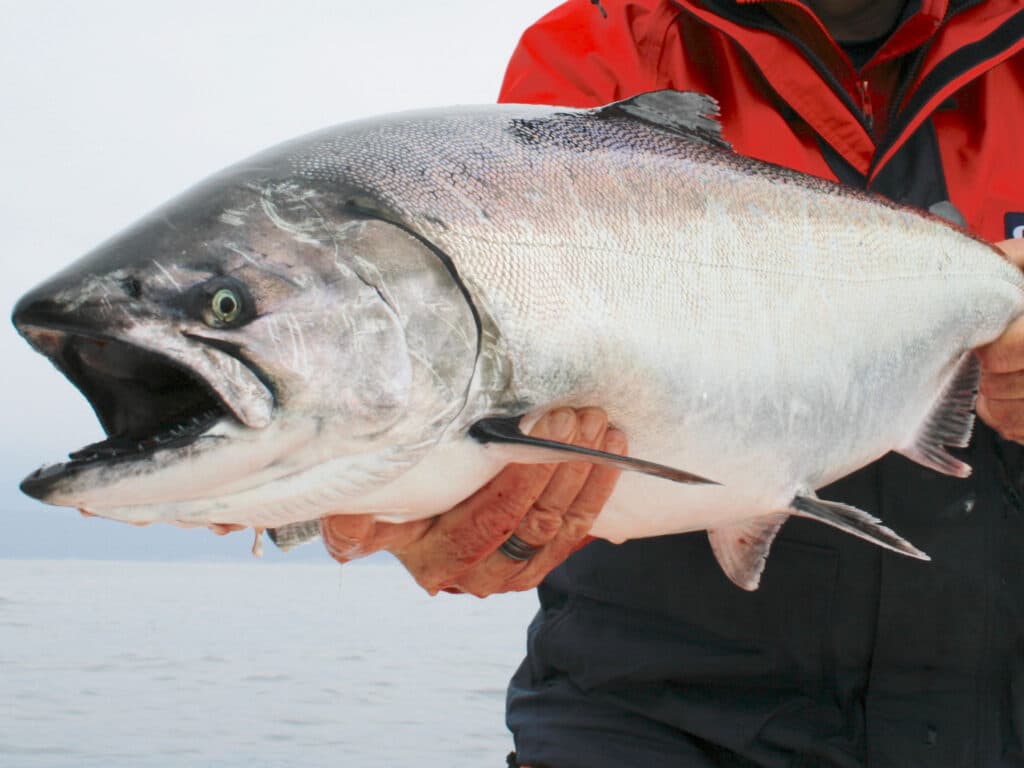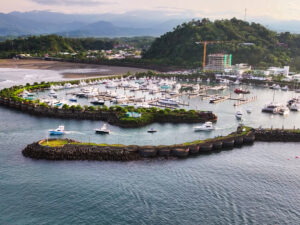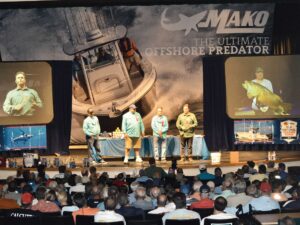
Based on a unanimous vote of the federal Pacific Fishery Management Council (PFMC), California’s commercial and recreational ocean salmon season faces a complete closure for the 2023 season. The decision was based on recent projections indicating that king (aka chinook) salmon populations in the ocean waters off California have reached historic lows.
“California Department of Fish and Wildlife (CDFW) staff estimate that less than 170,000 fall Chinook salmon are expected to return to the Sacramento River this year, one of the lowest forecasts in 15 years and 200,000 fewer than returned in 2022,” said Larry Phillips, Pacific Fisheries Policy Director of the American Sportfishing Association. “Biologists also anticipate that only 104,000 fall Chinook salmon will return to the Klamath River in 2023, the second-lowest estimate since 1997.”
With the PFMC recommendation, the National Marine Fisheries Service will likely take regulatory action to enact the closure, effective in mid-May. In addition, the California Fish and Game Commission is expected to follow suit and adopt a closure of inland salmon fisheries at around the same time.
“This decision, while difficult, is intended to allow salmon to recover in order to provide future fishing opportunities,” said Charlton Bonham, director of the California Department of Fish and Wildlife.
“The state is committed to ensuring long-term survival of our salmon runs and supporting our struggling fishing communities,” Bonham added, in reference to California businesses that depend on salmon sport and commercial fishing.
In recent years, California has been plagued by a prolonged and historic drought, severe wildfires and associated impacts to rivers that provide salmon spawning and rearing habitat. In addition, harmful algal blooms and ocean forage shifts have contributed to some of the lowest stock abundance forecasts on record for Sacramento River Fall Chinook and Klamath River Fall Chinook.
However, the primary negative influence on California salmon stocks in recent past years have been policy decisions made by water managers at the state and federal levels, says Marc Gorelnik, chair of the PFMC. “Water managers have for years held back (from damned reservoirs) the flow of cold water that’s vitally necessary in summer for the Sacramento and Klamath river fall chinook fry to out-migrate down river,” Gorelnik explains. This reason for the holdback? Water is prioritized for the state’s massive and ever-expanding agricultural needs.
“With the lack of cold, fast-moving river water, the salmon fry are annihilated by the excessively high temperatures and predators that find the young salmon easy pickings in the shallow, slow-moving tributaries,” says John McManus, says senior policy director for the Golden State Salmon Association that represents both commercial and recreational interests.
“The poor conditions in the freshwater environment that contributed to these low forecast returns are unfortunately not something that the PFMC can, or has the authority to, control,” Gorelnik points out. “That said, recommending a full closure was the right decision based on the data we have available,” Gorelnik added.
“Many recreational anglers voiced their frustration about the closure at the March PFMC meeting in Seattle, stating that inaccurate preseason forecasts, the lack of in-season management, in-river policies that don’t prioritize the needs of fish and the recent drought all contributed towards the closure,” said Phillips. “Last year, biologists with CDFW estimated that only 61,000 adult fall Chinook returned to the Sacramento River. This is the lowest estimate on record and is likely to impact recreational opportunities for several years.”
On the good news side of the salmon equation, patterns indicate that salmon returning three years from now will benefit from the ample precipitation California has experienced this year.
“We deeply appreciate the fishing community in California voicing support for this serious step to help these stocks recover,” said Bonham. For more information regarding the PFMC actions, visit pcouncil.org.
NOTE: This page was updated on April 12, 2023 with quotes from Larry Phillips, Pacific Fisheries Policy Director of the American Sportfishing Association.
NOTE: This page was updated on April 14, 2023 with quotes from Marc Gorelnik, chair of the Pacific Fishery Management Council, and John McManus, senior policy director for the Golden State Salmon Association.









